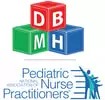Cerebral Palsy
Cerebral palsy (CP) is a group of conditions that affects the parts of your brain that control your muscles. CP is the most common cause of movement problems in childhood. Four CP types to note, as categorized by the movement problem:
|
Spastic CP (most common, ~80%) : characterized by stiff muscles and/or awkward body movements. Signs and symptoms include:
|
Other kinds of CP include:
|
Assessment & Screening Tools
Scales:
Possible Labs:
|
Important to rule out:
Possible Imaging studies:
|
POSSIBLE RISK FACTORS:
|
Prenatal
Maternal: thyroid disorder, mental retardation, seizure disorder, iodine deficiency, previous pregnancy loss, toxin exposure Pregnancy: congenital malformations, infections, polyhydramnos, thyroid hormone use, estrogen, or progesterone, severe maternal proteinuria or high blood pressure, third trimester bleeding, multiple gestations |
Perinatal
prematurity ( |
Postpartum
infections, parenchymal or intraparenchymal hemorrhage, jaundice causing kernicterus, prolonged ventilation, hypoxic ischemic encephalopathy (HIE) |
Position Papers
-
Position paper on the use of botulinum toxin in cerebral palsy (Carr, Cosgrove, Gringras, & Neville, 1998)
Articles
- Enriched Environments and Motor Outcomes in Cerebral Palsy: Systematic Review and Meta-analysis (Morgan, Novak & Badawi, 2013)
- Parents' actions, challenges, and needs while enabling participation of children with a physical disability: a scoping review (Piškur, Beurskens, Jongmans, Ketelaar, Norton , et al, 2012)
- Clinical prognostic messages from a systematic review on cerebral palsy (Novak, Hines, Goldsmith & Barclay, 2012)
- The evidence-base for conceptual approaches and additional therapies targeting lower limb function in children with cerebral palsy: a systematic review using the ICF as a framework (Frank, Desloovere, De Cat, Feys, Molenaers, Calders, Vanderstraeten, Himpens & Van Broeck, 2012)
- Does acute passive stretching increase muscle length in children with cerebral palsy? (Theis, Korff, Kairon & Mohagheghi, 2013)
Resources
Transitions to Adulthood
|
Organizations:
|
